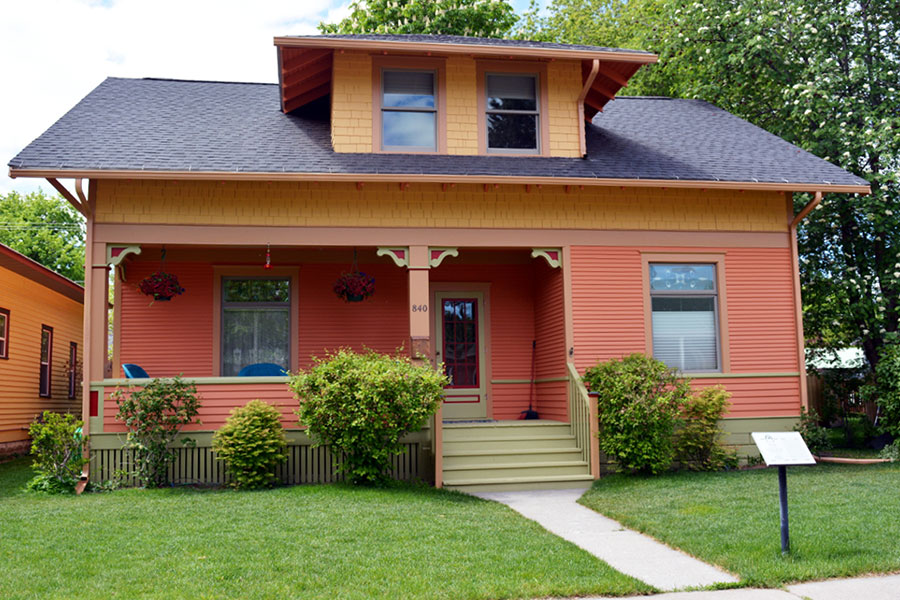If you’re the type to marvel at simplicity, then the King House at 840 Fourth Ave. E. in Kalispell is worthy of appreciation. And especially so, if you appreciate architectural renditions that speak more of “transition” than any one definitive style.
The house was originally built around 1909 by Caesar Haverlandt, which alone is noteworthy. Haverlandt came to Kalispell in 1905 and quickly took up work as a builder and general contractor. Consequently, Haverlandt built many homes in Kalispell and throughout the Flathead Valley, including this one, which he built for his brother Charles. Haverlandt’s work stands out not only for his outstanding craftsmanship, but also the quality of the materials he used. Plenty of his original work, in its original form, can be found around town – despite the passing of some 100 years.
What also makes the King House special is that it’s a fine example of a Craftsman-style residence – with a few late Victorian elements. In fact, it’s an excellent example of a house built at a time of architectural transition, if you will. That is, as the popularity of the Victorian-era flourishes waned, and the ideology of Craftsman simplicity waxed, residences such as the King House were built with a bit of both in mind.
For example, there are the clearly Victorian elements of the long lines of horizontal clapboard offset by short, squared shingles above. Yet the unmistakable, wide-eaved roof, with exposed rafters, and a plain-as-day front dormer exemplify the Craftsman style. And while fanciful (Victorian) scrollwork adorns the front porch columns, the rest of the house offers a study in (Craftsman) symmetry: note how there is a window on each side of the front door, which stands centered below the two windows of the dormer above.
Having improved upon the lot by building a house, Charles Haverlandt sold the house in 1911 to J.H. Graves, an early Flathead pioneer. Graves then sold the home in 1918 to its namesakes Dean and Metta (née Steere) King. Aside from keeping the home, the Kings proved a key measure about real estate: a neighborhood is only as good as its neighbors. And the Kings were of the best you could find.
Considering that Dean King was a court reporter, turned county attorney, turned 11th Judicial District Judge for the better of 17 years, some folks may have had a few “choice” words for him, particularly those on the more deserving end of his judgments. However, both Dean and Metta did more than live and work in Kalispell, they helped cultivate their neighborhood and their community – and did so with a seriousness and selflessness typically reserved for bygone generations. Metta’s contributions alone, whether as matron, hostess, charter member or volunteer, read like a dizzying array of Kalispell’s historical who’s-who. Likewise, the receptions, events and gatherings she held at the home seem countless, and a good reminder about perhaps the “greater purpose” a house can offer.
So, if you’re interested in say, the history of the Masonic order associated with the King House, then worm your way through the shelves at the ImagineIf Library. But if you’d like to appreciate a well-preserved example of Kalispell’s unique architecture, then pause for a moment near the corner of Eighth St. E. and Fourth Ave. E. sometime.
Jaix Chaix is a columnist and author of Flathead Valley Landmarks and other local history books that are available for sale at the Flathead Beacon at 17 Main St. in Kalispell.
